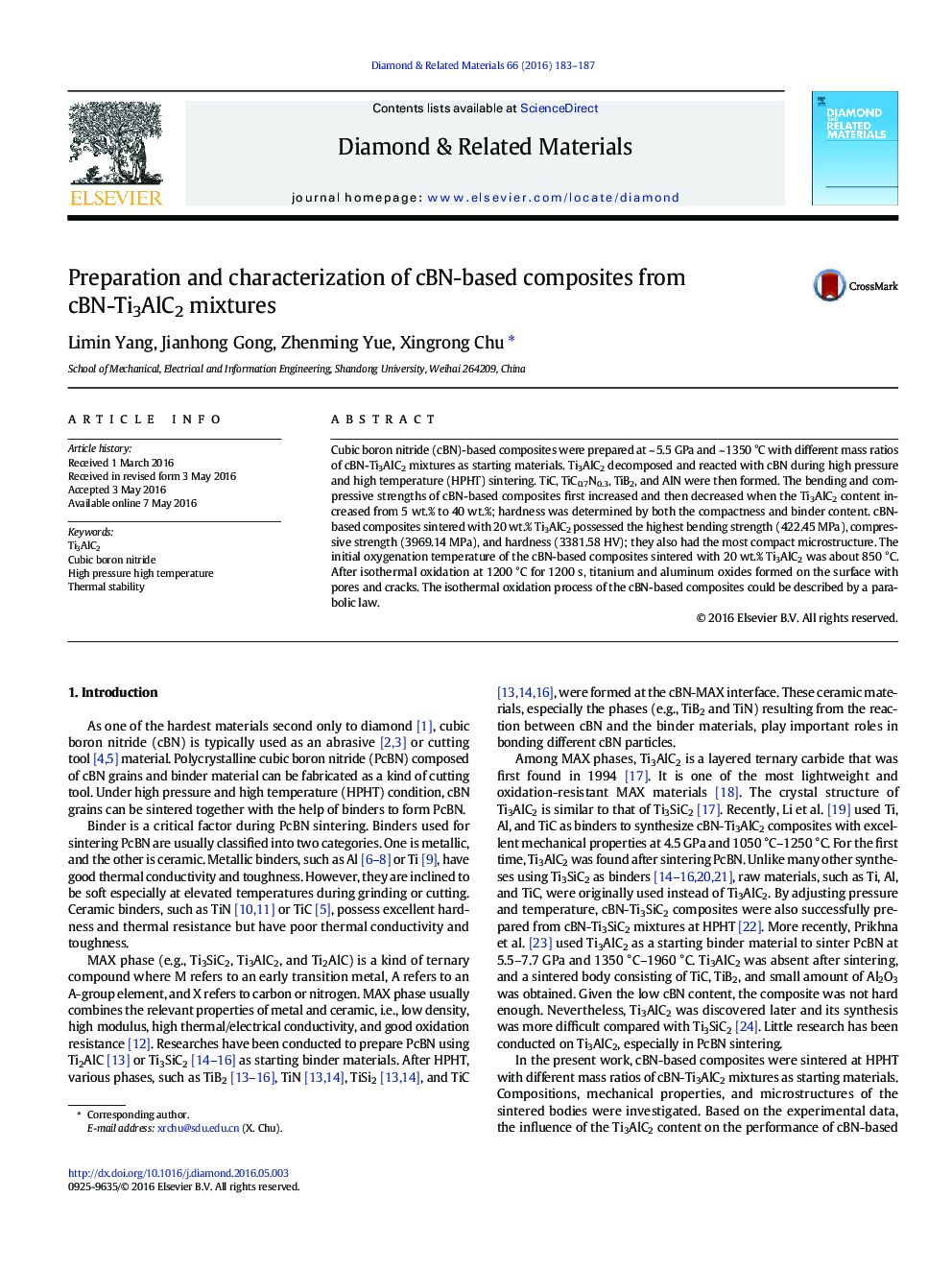| Article ID | Journal | Published Year | Pages | File Type |
|---|---|---|---|---|
| 701779 | Diamond and Related Materials | 2016 | 5 Pages |
•cBN-based composites were prepared from different ratios of cBN-Ti3AlC2 mixtures.•Bending strength and compressive strength of cBN-based composites were measured.•Influence of Ti3AlC2 contents to mechanical properties of samples was discussed.•Oxidation behavior of cBN-based composites was studied.
Cubic boron nitride (cBN)-based composites were prepared at ~ 5.5 GPa and ~ 1350 °C with different mass ratios of cBN-Ti3AlC2 mixtures as starting materials. Ti3AlC2 decomposed and reacted with cBN during high pressure and high temperature (HPHT) sintering. TiC, TiC0.7N0.3, TiB2, and AlN were then formed. The bending and compressive strengths of cBN-based composites first increased and then decreased when the Ti3AlC2 content increased from 5 wt.% to 40 wt.%; hardness was determined by both the compactness and binder content. cBN-based composites sintered with 20 wt.% Ti3AlC2 possessed the highest bending strength (422.45 MPa), compressive strength (3969.14 MPa), and hardness (3381.58 HV); they also had the most compact microstructure. The initial oxygenation temperature of the cBN-based composites sintered with 20 wt.% Ti3AlC2 was about 850 °C. After isothermal oxidation at 1200 °C for 1200 s, titanium and aluminum oxides formed on the surface with pores and cracks. The isothermal oxidation process of the cBN-based composites could be described by a parabolic law.
Graphical abstractFigure optionsDownload full-size imageDownload as PowerPoint slide
